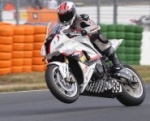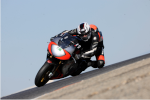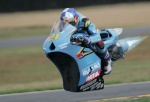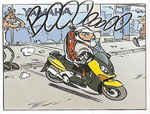| | [Technique] Moteurs MotoGP |  |
|
+71Motors31 fpayart MacPepR geuledebois Thieu Noël 88 daytona biger closed t2 Loi's Ricovdue Emmanuel Laurentz Gilles_a_paris MANETON Rose Noire dga bentou Vivien57 Atch Adco cassandre michel guichard hoolish JanBros cat Ed Marco Pierre"PhilRead" Tchweizz Mykeul Alain Gwada yann Edouard B. LDA pascaltz desmofr16 Pasky Cardamome Dialmax EDOUARD Jean PVC bartau Fügner Polux rsv fd-racing thierysp Blow-by nortumph sergaï ttroncs fullgazlolo R one GrahamB Dan42 louloubec gozos cocco83 sdvs S-Marty Frits Overmars Charly Toop Emil' Seb4LO janpol84 Catastrofik Stephane cristogrr Pickup Marc 75 participants |
|
| Auteur | Message |
|---|
Marc
Admin

Nombre de messages : 28161
Age : 66
Localisation : Villiers sur Marne (94)
Date d'inscription : 27/05/2008
![[Technique] Moteurs MotoGP - Page 2 Empty](https://2img.net/i/empty.gif) |  Sujet: Re: [Technique] Moteurs MotoGP Sujet: Re: [Technique] Moteurs MotoGP ![[Technique] Moteurs MotoGP - Page 2 Icon_minitime](https://2img.net/i/fa/icon_minitime.gif) Jeu 9 Déc 2010 - 12:56 Jeu 9 Déc 2010 - 12:56 | |
| Je suis entièrement d'accord; les appelations du milieu ne sont que sources de confusion. C'est pourquoi j'ai créé ce topic. :) D'accord aussi pour Ducati: leur Twin Pulse est un vrai Big Bang alors que leur Big Bang n'en est pas un vrai! [Vous devez être inscrit et connecté pour voir cette image]_________________ Un p'tit clik vaut mieux qu'une grande claque; c'est Harry qui l'a dit! [Vous devez être inscrit et connecté pour voir cette image][Vous devez être inscrit et connecté pour voir ce lien] |
|
  | |
Emil'

Nombre de messages : 2843
Age : 39
Localisation : IDF SUD
Date d'inscription : 22/10/2010
![[Technique] Moteurs MotoGP - Page 2 Empty](https://2img.net/i/empty.gif) |  Sujet: Re: [Technique] Moteurs MotoGP Sujet: Re: [Technique] Moteurs MotoGP ![[Technique] Moteurs MotoGP - Page 2 Icon_minitime](https://2img.net/i/fa/icon_minitime.gif) Jeu 9 Déc 2010 - 13:13 Jeu 9 Déc 2010 - 13:13 | |
| |
|
  | |
Toop
Nombre de messages : 3925
Age : 17
Localisation : Tours
Date d'inscription : 02/01/2010
![[Technique] Moteurs MotoGP - Page 2 Empty](https://2img.net/i/empty.gif) |  Sujet: Re: [Technique] Moteurs MotoGP Sujet: Re: [Technique] Moteurs MotoGP ![[Technique] Moteurs MotoGP - Page 2 Icon_minitime](https://2img.net/i/fa/icon_minitime.gif) Jeu 9 Déc 2010 - 14:56 Jeu 9 Déc 2010 - 14:56 | |
| Piaf ?  ( les techniciens, y'a des jour ... on ne vous comprend pas trop ) ( les techniciens, y'a des jour ... on ne vous comprend pas trop ) |
|
  | |
Emil'

Nombre de messages : 2843
Age : 39
Localisation : IDF SUD
Date d'inscription : 22/10/2010
![[Technique] Moteurs MotoGP - Page 2 Empty](https://2img.net/i/empty.gif) |  Sujet: Re: [Technique] Moteurs MotoGP Sujet: Re: [Technique] Moteurs MotoGP ![[Technique] Moteurs MotoGP - Page 2 Icon_minitime](https://2img.net/i/fa/icon_minitime.gif) Jeu 9 Déc 2010 - 15:48 Jeu 9 Déc 2010 - 15:48 | |
| j'ai eu un doute,
twin pulse =
4Cyl qui fonctionne comme un twin ou 4 cyl qui fonctionne comme un twin, mais les 2 explosions sont décalées de 10 deg ?
Big bang, toutes les explosions décalées de 10°
Small bang = V4, cross plane
Bref, je m'y perd
|
|
  | |
Charly

Nombre de messages : 4040
Localisation : IdF
Date d'inscription : 21/04/2010
![[Technique] Moteurs MotoGP - Page 2 Empty](https://2img.net/i/empty.gif) |  Sujet: Re: [Technique] Moteurs MotoGP Sujet: Re: [Technique] Moteurs MotoGP ![[Technique] Moteurs MotoGP - Page 2 Icon_minitime](https://2img.net/i/fa/icon_minitime.gif) Lun 13 Déc 2010 - 17:46 Lun 13 Déc 2010 - 17:46 | |
| - Emil' a écrit:
Big bang, ...
Small bang ...
Bref, je m'y perd Faut surtout pas tirer sur le chou-bang avant de lire l'article ! |
|
  | |
Emil'

Nombre de messages : 2843
Age : 39
Localisation : IDF SUD
Date d'inscription : 22/10/2010
![[Technique] Moteurs MotoGP - Page 2 Empty](https://2img.net/i/empty.gif) |  Sujet: Re: [Technique] Moteurs MotoGP Sujet: Re: [Technique] Moteurs MotoGP ![[Technique] Moteurs MotoGP - Page 2 Icon_minitime](https://2img.net/i/fa/icon_minitime.gif) Lun 13 Déc 2010 - 19:01 Lun 13 Déc 2010 - 19:01 | |
| Big bang, selon la moto de Doohan 92,
c'était tout les cylindres explose à 10° d'écart
En tout cas, le big bang n'est pas le calage V4 - crossplane |
|
  | |
Toop
Nombre de messages : 3925
Age : 17
Localisation : Tours
Date d'inscription : 02/01/2010
![[Technique] Moteurs MotoGP - Page 2 Empty](https://2img.net/i/empty.gif) |  Sujet: Re: [Technique] Moteurs MotoGP Sujet: Re: [Technique] Moteurs MotoGP ![[Technique] Moteurs MotoGP - Page 2 Icon_minitime](https://2img.net/i/fa/icon_minitime.gif) Lun 13 Déc 2010 - 21:03 Lun 13 Déc 2010 - 21:03 | |
| sur un vilo assemblé ... ça ne m'étonne pas que leur durée de vie était de si peu de km ! |
|
  | |
Frits Overmars

Nombre de messages : 2638
Age : 76
Localisation : Raalte, Holland
Date d'inscription : 12/10/2010
![[Technique] Moteurs MotoGP - Page 2 Empty](https://2img.net/i/empty.gif) |  Sujet: Re: [Technique] Moteurs MotoGP Sujet: Re: [Technique] Moteurs MotoGP ![[Technique] Moteurs MotoGP - Page 2 Icon_minitime](https://2img.net/i/fa/icon_minitime.gif) Mar 14 Déc 2010 - 14:24 Mar 14 Déc 2010 - 14:24 | |
| Please allow me to explain my view on the big-bang principle. - Jean François Robert a écrit:
- le cycle à 4 temps se décompose en 4 phases, admission, compression, combustion/détente puis échappement. Ces différentes étapes se traduisent par des variations de pression importantes à l’intérieur du cylindre et donc particulièrement sur la calotte du piston..... cette pression se traduit par une force communiquée à la bielle. C’est cette force qui est à l’origine du couple
moteur. That is true - but when the engine is running at 13.000 rpm, the pressure in the cylinder is not capable of accelerating the piston fast enough. The conrod has to pull the piston down! So this phase of piston movement does not put energy into the crankshaft; it costs energy. After the piston has reached its maximum velocity, the conrod has to slow it down again. Now the piston is pushing against the conrod and positive energy is delivered to the crankshaft. After the piston has stopped in BDC, the conrod has to push it upwards until maximum piston speed is reached again. Then the piston wants to continue at that speed despite the fact that the compression pressure is trying to slow it down. So now the piston is pulling at the conrod, which is also delivering positive energy to the crankshaft. The so-called 'work stroke' of the piston does not exist! Instead there are two 'positive half-strokes': from mid-position down to BDC when the piston pushes against the conrod, and from mid-position up to TDC when the piston is pulling at the conrod. In this example I am talking about a two-stroke engine - after all that is what started the whole big bang-confusion. But it is not difficult to understand that the same things happen in a four-stroke. In the picture below the yellow graph shows the inertia force in the conrod that would be needed to move the piston if there were no gas pressure in the cylinder. A positive value (= above the horizontal white line) is a pushing force in the conrod, a negative value is a pulling force. The white graph shows the force on the piston, generated by the cylinder pressure, and the blue graph shows the resulting force in the conrod that accelerates or decelerates the crankshaft. [Vous devez être inscrit et connecté pour voir cette image]The picture below shows the torque fluctuation within one crankshaft revolution of a single-cylinder two-stroke engine. You can see that the peak value is 10 times higher than the mean torque! [Vous devez être inscrit et connecté pour voir cette image]The picture below shows the torque fluctuation within one crankshaft revolution of a twin-cylinder two-stroke with 180° phasing between the piston positions. The solid blue line shows the torque from cylinder 1 that we have already seen above; the dotted blue line shows the torque from cylinder 2. The yellow line shows the total torque. [Vous devez être inscrit et connecté pour voir cette image]The picture below shows the torque fluctuation within one cranksaft revolution of a twin-cylinder two-stroke with 90° phasing between the piston positions. The solid blue line shows the torque from cylinder 1; the dotted blue line shows the torque from cylinder 2. The yellow line shows the total torque. The dotted red line is there for comparion; it is the same as the yellow line in the picture above which shows the torque of two cylinders at 180°. [Vous devez être inscrit et connecté pour voir cette image]You can see that the torque fluctuation of a 90°-twin is only half as bad as the fluctuation of the 180°-twin. That means an easier life for the clutch, the gearbox, the chain and the rear tire; you can use a softer rubber compound with more grip. Summary: the fairy tale of a big bang with two cylinders firing together, and then a pause, so that the rear tire gets time to regain grip, is just that: a fairy tale. The name big bang originated from the engine sound. With the Honda NSR 500-4 we were used to 2 cylinders firing, 180° later the other 2 cylinders firing, 180° later the first 2 cylinders firing again, and so on: a nice even sound: the original screamer. With the big bang engine it was: 2 cylinders firing, 90° later the other 2 cylinders firing, then 270° silence, then the first 2 cylinders firing again: an uneven sound. Honda even built a 'big bang-screamer': every 90° 1 cylinder firing. That sounded great! But Mick Doohan did not like the bike, so it disappeared.... |
|
  | |
S-Marty

Nombre de messages : 94
Age : 50
Localisation : La Montagne
Date d'inscription : 11/11/2010
![[Technique] Moteurs MotoGP - Page 2 Empty](https://2img.net/i/empty.gif) |  Sujet: Re: [Technique] Moteurs MotoGP Sujet: Re: [Technique] Moteurs MotoGP ![[Technique] Moteurs MotoGP - Page 2 Icon_minitime](https://2img.net/i/fa/icon_minitime.gif) Mar 14 Déc 2010 - 20:54 Mar 14 Déc 2010 - 20:54 | |
| Thanks a lot, Frits. Par contre, si quelqu'un pouvait nous faire une très bonne traduction de l'anglais technique.... ![[Technique] Moteurs MotoGP - Page 2 809262](/users/3313/47/10/07/smiles/809262.gif)
Dernière édition par S-Marty le Mar 14 Déc 2010 - 22:46, édité 1 fois |
|
  | |
sdvs

Nombre de messages : 485
Age : 38
Localisation : normandie
Date d'inscription : 12/11/2010
![[Technique] Moteurs MotoGP - Page 2 Empty](https://2img.net/i/empty.gif) | |
  | |
Marc
Admin

Nombre de messages : 28161
Age : 66
Localisation : Villiers sur Marne (94)
Date d'inscription : 27/05/2008
![[Technique] Moteurs MotoGP - Page 2 Empty](https://2img.net/i/empty.gif) |  Sujet: Re: [Technique] Moteurs MotoGP Sujet: Re: [Technique] Moteurs MotoGP ![[Technique] Moteurs MotoGP - Page 2 Icon_minitime](https://2img.net/i/fa/icon_minitime.gif) Mar 14 Déc 2010 - 22:27 Mar 14 Déc 2010 - 22:27 | |
| Thank you so much, Frits! ![[Technique] Moteurs MotoGP - Page 2 771973](/users/3313/47/10/07/smiles/771973.gif) ![[Technique] Moteurs MotoGP - Page 2 771973](/users/3313/47/10/07/smiles/771973.gif) ![[Technique] Moteurs MotoGP - Page 2 771973](/users/3313/47/10/07/smiles/771973.gif) Voici une traduction, la mienne, forcément améliorable. [quote="Frits Overmars"] Permettez-moi de vous expliquer mon point de vue sur le principe du Big Bang: - Jean François Robert a écrit:
- le cycle à 4 temps se décompose en 4 phases, admission, compression, combustion/détente puis échappement. Ces différentes étapes se traduisent par des variations de pression importantes à l’intérieur du cylindre et donc particulièrement sur la calotte du piston..... cette pression se traduit par une force communiquée à la bielle. C’est cette force qui est à l’origine du couple
moteur. Ceci est vrai, mais quand le moteur tourne à 13.000 trs/mn, la pression dans le cylindre n'est pas capable de pousser assez vite le piston. C'est à la bielle de tirer le piston! Cette phase du mouvement du piston n'apporte pas d'énergie au vilebrequin, elle en coûte! Une fois que le piston a atteint sa vitesse maximum, la bielle a à le ralentir à nouveau. A ce moment, le piston pousse sur la bielle et de l'énergie est délivrée au vilebrequin. Une fois que le piston s'est immobilisé au point mort bas (uniquement en translation verticale) la bielle doit le repousser une nouvelle fois jusqu'à atteindre sa vélocité maximum. Le piston veut alors continuer à cette vitesse, malgré la compression qui tente de le ralentir. Donc maintenant, le piston tire sur la bielle, ce qui apporte également une énergie positive au vilebrequin. La soit-disante "course de travail" du piston n'existe pas! A la place, il y a deux "demi-temps positifs": de la position médiane jusqu'à Point Mort Bas, quand le piston pousse contre la bielle, et la position médiane jusqu'au Point Mort Haut, quand le piston tire sur la bielle. Dans cet exemple, je parle d'un 2temps (après tout, c'est de là qu'est née toute la confusion sur le Big Bang) mais il n'est pas difficile de comprendre que les mêmes phénomènes se retrouvent dans les 4temps. Dans l'image ci-dessous, la courbe en jaune représente la force d'inertie nécessaire à la bielle pour mouvoir le piston s'il n'y avait pas d'explosion dans le cylindre. Une valeur positive ( = au-dessus de la ligne blanche) indique que la bielle pousse, une valeur négative, que la bielle tire. La courbe blanche montre la force sur le piston, générée par l'explosion. La courbe bleue montre la force résultante sur la bielle, qui accélère ou décélère le vilebrequin. [Vous devez être inscrit et connecté pour voir cette image]L'image ci-dessous montre la variation du couple durant un tour de vilebrequin sur un monocylindre 2temps. Notez que le pic d'intensité est 10 fois supérieur au couple moyen! [Vous devez être inscrit et connecté pour voir cette image]L'image ci-dessous montre la variation de couple durant un tour de vilebrequin sur un bi-cylindre 2 temps calé à 180°. La courbe bleue pleine montre le couple du cylindre n°1 que l'on a déjà vu plus haut. La courbe bleue en pointillés montre le couple du cylindre n°2. La courbe jaune montre le couple résultant. [Vous devez être inscrit et connecté pour voir cette image]L'image ci-dessous montre la variation de couple durant un tour de vilebrequin sur un bicylindre 2 temps calé à 90°. La courbe bleue pleine montre le couple du cylindre n°1. La courbe bleue en pointillés montre le couple du cylindre n°2. La courbe jaune montre le couple résultant. La courbe rouge en pointillés est en comparaison; c'est la même que la courbe jaune sur l'image précédente et elle correspond au couple global d'un bicylindre à 180°. [Vous devez être inscrit et connecté pour voir cette image]Vous pouvez voir que la variation de couple d'un twin à 90° est moitié moindre que celle d'un twin à 180°. Cela signifie une vie plus facile pour l'embrayage, la boîte de vitesses, la chaîne et le pneu arrière. Vous pouvez donc utiliser un pneu plus tendre at avoir plus de grip. En résumé: la légende du Big Bang constitué de deux cylindres qui explosent en même temps, et dont la pause qui s'ensuit est censé donner du temps au pneu pour retrouver du grip est seulement cela; une légende! Le terme Big Bang trouve son origine dans le bruit du moteur. Dans le Honda NSR 500-4, nous étions habitués à l'explosion simultanée de 2 cylindres, puis, 180° plus tard, des deux autres cylindres, etc; un joli bruit régulier appelé Screamer. Avec le moteur Big Bang, c'était deux cylindres qui explosaient en même temps puis, 90° plus tars, les deux autres cylindres, puis plus rien pendant 270°: un son irrégulier. Honda a même construit un "Big Bang Screamer": tous les 90°, il y avait un cylindre qui explosait. Le bruit était fabuleux! Mais Mick Doohan n'aimait pas la moto, donc elle disparut.... _________________ Un p'tit clik vaut mieux qu'une grande claque; c'est Harry qui l'a dit! [Vous devez être inscrit et connecté pour voir cette image][Vous devez être inscrit et connecté pour voir ce lien]
Dernière édition par Marc le Mer 15 Déc 2010 - 23:45, édité 7 fois |
|
  | |
Frits Overmars

Nombre de messages : 2638
Age : 76
Localisation : Raalte, Holland
Date d'inscription : 12/10/2010
![[Technique] Moteurs MotoGP - Page 2 Empty](https://2img.net/i/empty.gif) |  Sujet: Re: [Technique] Moteurs MotoGP Sujet: Re: [Technique] Moteurs MotoGP ![[Technique] Moteurs MotoGP - Page 2 Icon_minitime](https://2img.net/i/fa/icon_minitime.gif) Mar 14 Déc 2010 - 22:59 Mar 14 Déc 2010 - 22:59 | |
| Marc, permit me to compliment you on your French ![[Technique] Moteurs MotoGP - Page 2 771973](/users/3313/47/10/07/smiles/771973.gif) . It was a perfect translation (yes, I can read French; I just cannot write it  ). You asked for an explanation of 'work stroke'. That would translate into something like 'course de travail'. It is the expansion stroke from TDC to BDC when, according to conventional belief, energy is brought into the crankshaft. |
|
  | |
cristogrr

Nombre de messages : 1761
Age : 60
Localisation : sirault belgique
Date d'inscription : 26/04/2010
![[Technique] Moteurs MotoGP - Page 2 Empty](https://2img.net/i/empty.gif) |  Sujet: Re: [Technique] Moteurs MotoGP Sujet: Re: [Technique] Moteurs MotoGP ![[Technique] Moteurs MotoGP - Page 2 Icon_minitime](https://2img.net/i/fa/icon_minitime.gif) Mer 15 Déc 2010 - 21:42 Mer 15 Déc 2010 - 21:42 | |
| Hello ,Frits, and others, I agree for the explanation about the torque but I disagree for the relation about the grip , the recent traction controls stops the firing to help the tire to sticks on the ground , it is the same effect as bigtwin Ducati against the screamers , they don't use the same amount of "traction control" because the grip is consistent (The D16 was developped into a twin pulse to copy this, with less misfiring the fuel...) The use of TC was a great help at the end of the 250cc era who were so fast and rigid in the rain despite the fact ther are 90° cranked , what you think? [Vous devez être inscrit et connecté pour voir cette image] I have to say that I ride big twins w/o TC. |
|
  | |
Frits Overmars

Nombre de messages : 2638
Age : 76
Localisation : Raalte, Holland
Date d'inscription : 12/10/2010
![[Technique] Moteurs MotoGP - Page 2 Empty](https://2img.net/i/empty.gif) |  Sujet: Re: [Technique] Moteurs MotoGP Sujet: Re: [Technique] Moteurs MotoGP ![[Technique] Moteurs MotoGP - Page 2 Icon_minitime](https://2img.net/i/fa/icon_minitime.gif) Mer 15 Déc 2010 - 22:20 Mer 15 Déc 2010 - 22:20 | |
| - cristogrr a écrit:
- I agree for the explanation about the torque but I disagree for the relation about the grip , the recent traction controls stops the firing to help the tire to sticks on the ground.
Traction control is a different story; TC for motorcycles was introduced long after the introduction of big bang. But even now it is better to preserve the rear tire grip by smoothing the torque, than to let TC save the situation after the grip is already broken... |
|
  | |
Marc
Admin

Nombre de messages : 28161
Age : 66
Localisation : Villiers sur Marne (94)
Date d'inscription : 27/05/2008
![[Technique] Moteurs MotoGP - Page 2 Empty](https://2img.net/i/empty.gif) |  Sujet: Re: [Technique] Moteurs MotoGP Sujet: Re: [Technique] Moteurs MotoGP ![[Technique] Moteurs MotoGP - Page 2 Icon_minitime](https://2img.net/i/fa/icon_minitime.gif) Mer 15 Déc 2010 - 22:28 Mer 15 Déc 2010 - 22:28 | |
| Translation completed. Thank you Frits.... but now, i have to check and probably change my first message! ![[Technique] Moteurs MotoGP - Page 2 809262](/users/3313/47/10/07/smiles/809262.gif) _________________ Un p'tit clik vaut mieux qu'une grande claque; c'est Harry qui l'a dit! [Vous devez être inscrit et connecté pour voir cette image][Vous devez être inscrit et connecté pour voir ce lien] |
|
  | |
Frits Overmars

Nombre de messages : 2638
Age : 76
Localisation : Raalte, Holland
Date d'inscription : 12/10/2010
![[Technique] Moteurs MotoGP - Page 2 Empty](https://2img.net/i/empty.gif) |  Sujet: Re: [Technique] Moteurs MotoGP Sujet: Re: [Technique] Moteurs MotoGP ![[Technique] Moteurs MotoGP - Page 2 Icon_minitime](https://2img.net/i/fa/icon_minitime.gif) Mer 15 Déc 2010 - 23:38 Mer 15 Déc 2010 - 23:38 | |
| - Marc a écrit:
- Translation completed.
Thank you Marc ![[Technique] Moteurs MotoGP - Page 2 771973](/users/3313/47/10/07/smiles/771973.gif) ![[Technique] Moteurs MotoGP - Page 2 771973](/users/3313/47/10/07/smiles/771973.gif) ![[Technique] Moteurs MotoGP - Page 2 771973](/users/3313/47/10/07/smiles/771973.gif) (Is your Dutch as good as your English? Then I could write twice as much in half the time and you could turn it into perfect French  ) |
|
  | |
janpol84

Nombre de messages : 6605
Age : 72
Localisation : 84
Date d'inscription : 09/08/2009
![[Technique] Moteurs MotoGP - Page 2 Empty](https://2img.net/i/empty.gif) |  Sujet: Re: [Technique] Moteurs MotoGP Sujet: Re: [Technique] Moteurs MotoGP ![[Technique] Moteurs MotoGP - Page 2 Icon_minitime](https://2img.net/i/fa/icon_minitime.gif) Mer 15 Déc 2010 - 23:38 Mer 15 Déc 2010 - 23:38 | |
| - Marc a écrit:
- ...'work stroke' (ndlr: là, faut m'aider) ...
work stroke = temps moteur (avec temps dans le même sens que 4 temps) Mais la version de Frits "course de travail" est très convenable, voire plus explicite... Toujours à votre service, chef ![[Technique] Moteurs MotoGP - Page 2 809262](/users/3313/47/10/07/smiles/809262.gif) |
|
  | |
Marc
Admin

Nombre de messages : 28161
Age : 66
Localisation : Villiers sur Marne (94)
Date d'inscription : 27/05/2008
![[Technique] Moteurs MotoGP - Page 2 Empty](https://2img.net/i/empty.gif) |  Sujet: Re: [Technique] Moteurs MotoGP Sujet: Re: [Technique] Moteurs MotoGP ![[Technique] Moteurs MotoGP - Page 2 Icon_minitime](https://2img.net/i/fa/icon_minitime.gif) Mer 15 Déc 2010 - 23:41 Mer 15 Déc 2010 - 23:41 | |
| Frits, if you can write using only 5 words (Assen, Zandvoort, Amsterdam, Rotterdam and Amstel), YES!  _________________ Un p'tit clik vaut mieux qu'une grande claque; c'est Harry qui l'a dit! [Vous devez être inscrit et connecté pour voir cette image][Vous devez être inscrit et connecté pour voir ce lien] |
|
  | |
S-Marty

Nombre de messages : 94
Age : 50
Localisation : La Montagne
Date d'inscription : 11/11/2010
![[Technique] Moteurs MotoGP - Page 2 Empty](https://2img.net/i/empty.gif) |  Sujet: Re: [Technique] Moteurs MotoGP Sujet: Re: [Technique] Moteurs MotoGP ![[Technique] Moteurs MotoGP - Page 2 Icon_minitime](https://2img.net/i/fa/icon_minitime.gif) Jeu 16 Déc 2010 - 11:28 Jeu 16 Déc 2010 - 11:28 | |
| Excellent! ![[Technique] Moteurs MotoGP - Page 2 771973](/users/3313/47/10/07/smiles/771973.gif) Et bien, la traduction n'était pas superflue pour bien tout comprendre (du moins, pour moi!) Merci Marc, Thanks again Frits, with your explications, it's really easy to know how the "big bang" works. ![[Technique] Moteurs MotoGP - Page 2 241515](/users/3313/47/10/07/smiles/241515.gif) |
|
  | |
Pickup

Nombre de messages : 1124
Age : 60
Localisation : 91
Date d'inscription : 29/09/2008
![[Technique] Moteurs MotoGP - Page 2 Empty](https://2img.net/i/empty.gif) |  Sujet: Re: [Technique] Moteurs MotoGP Sujet: Re: [Technique] Moteurs MotoGP ![[Technique] Moteurs MotoGP - Page 2 Icon_minitime](https://2img.net/i/fa/icon_minitime.gif) Jeu 16 Déc 2010 - 12:15 Jeu 16 Déc 2010 - 12:15 | |
| ![[Technique] Moteurs MotoGP - Page 2 771973](/users/3313/47/10/07/smiles/771973.gif) thank you Frits, merci Marc pour la traduce..... quelque part ça me rassure , j'arrivais pas à comprendre cette notion de reposer le pneu entre deux coup de bélier,...., une légende donc lol |
|
  | |
S-Marty

Nombre de messages : 94
Age : 50
Localisation : La Montagne
Date d'inscription : 11/11/2010
![[Technique] Moteurs MotoGP - Page 2 Empty](https://2img.net/i/empty.gif) |  Sujet: Re: [Technique] Moteurs MotoGP Sujet: Re: [Technique] Moteurs MotoGP ![[Technique] Moteurs MotoGP - Page 2 Icon_minitime](https://2img.net/i/fa/icon_minitime.gif) Jeu 16 Déc 2010 - 13:54 Jeu 16 Déc 2010 - 13:54 | |
| les explosions calées sur 90°, et 270° sans que rien ne se passe...
...'l'a le temps de se reposer le pneu, non? |
|
  | |
Frits Overmars

Nombre de messages : 2638
Age : 76
Localisation : Raalte, Holland
Date d'inscription : 12/10/2010
![[Technique] Moteurs MotoGP - Page 2 Empty](https://2img.net/i/empty.gif) |  Sujet: Re: [Technique] Moteurs MotoGP Sujet: Re: [Technique] Moteurs MotoGP ![[Technique] Moteurs MotoGP - Page 2 Icon_minitime](https://2img.net/i/fa/icon_minitime.gif) Jeu 16 Déc 2010 - 14:33 Jeu 16 Déc 2010 - 14:33 | |
| The pneu is not there to rest; it is there to work :twisted: |
|
  | |
cristogrr

Nombre de messages : 1761
Age : 60
Localisation : sirault belgique
Date d'inscription : 26/04/2010
![[Technique] Moteurs MotoGP - Page 2 Empty](https://2img.net/i/empty.gif) |  Sujet: Re: [Technique] Moteurs MotoGP Sujet: Re: [Technique] Moteurs MotoGP ![[Technique] Moteurs MotoGP - Page 2 Icon_minitime](https://2img.net/i/fa/icon_minitime.gif) Jeu 16 Déc 2010 - 14:52 Jeu 16 Déc 2010 - 14:52 | |
| HI, yes , but too many stress on the tire and you loose the main job : transform an irregular work to a seeming continuous traction, the first wheel pictures with the stars are a good explanation what is happend; if you remove also the rubber damper at the rear sproket you will have the IUWA comming with a higher level , does it? To improve the grip Aprilia had in the last version of the V2 increased the crankshaft weigth at least of one kilo because the mid range torque was too abrupt, it plays in the way of your torque distribution(smoothing the pics) [Vous devez être inscrit et connecté pour voir cette image] |
|
  | |
Frits Overmars

Nombre de messages : 2638
Age : 76
Localisation : Raalte, Holland
Date d'inscription : 12/10/2010
![[Technique] Moteurs MotoGP - Page 2 Empty](https://2img.net/i/empty.gif) |  Sujet: Re: [Technique] Moteurs MotoGP Sujet: Re: [Technique] Moteurs MotoGP ![[Technique] Moteurs MotoGP - Page 2 Icon_minitime](https://2img.net/i/fa/icon_minitime.gif) Jeu 16 Déc 2010 - 15:14 Jeu 16 Déc 2010 - 15:14 | |
| - cristogrr a écrit:
- To improve the grip Aprilia had in the last version of the V2 increased the crankshaft weigth at least of one kilo because the mid range torque was too abrupt, it plays in the way of your torque distribution(smoothing the peaks)
Yes; the next step would have been to make the crankshafts completely out of uranium 8) . Thank God Dorna killed the 250-class just in time... ![[Technique] Moteurs MotoGP - Page 2 629615](/users/3313/47/10/07/smiles/629615.gif) |
|
  | |
cristogrr

Nombre de messages : 1761
Age : 60
Localisation : sirault belgique
Date d'inscription : 26/04/2010
![[Technique] Moteurs MotoGP - Page 2 Empty](https://2img.net/i/empty.gif) |  Sujet: Re: [Technique] Moteurs MotoGP Sujet: Re: [Technique] Moteurs MotoGP ![[Technique] Moteurs MotoGP - Page 2 Icon_minitime](https://2img.net/i/fa/icon_minitime.gif) Jeu 16 Déc 2010 - 15:22 Jeu 16 Déc 2010 - 15:22 | |
| Sorry Frits ,I was speaking about RSV1000cc 4 T [Vous devez être inscrit et connecté pour voir cette image] |
|
  | |
Contenu sponsorisé
![[Technique] Moteurs MotoGP - Page 2 Empty](https://2img.net/i/empty.gif) |  Sujet: Re: [Technique] Moteurs MotoGP Sujet: Re: [Technique] Moteurs MotoGP ![[Technique] Moteurs MotoGP - Page 2 Icon_minitime](https://2img.net/i/fa/icon_minitime.gif) | |
| |
|
  | |
| | [Technique] Moteurs MotoGP |  |
|
![[Technique] Moteurs MotoGP - Page 2 Empty](https://2img.net/i/fa/empty.gif)






